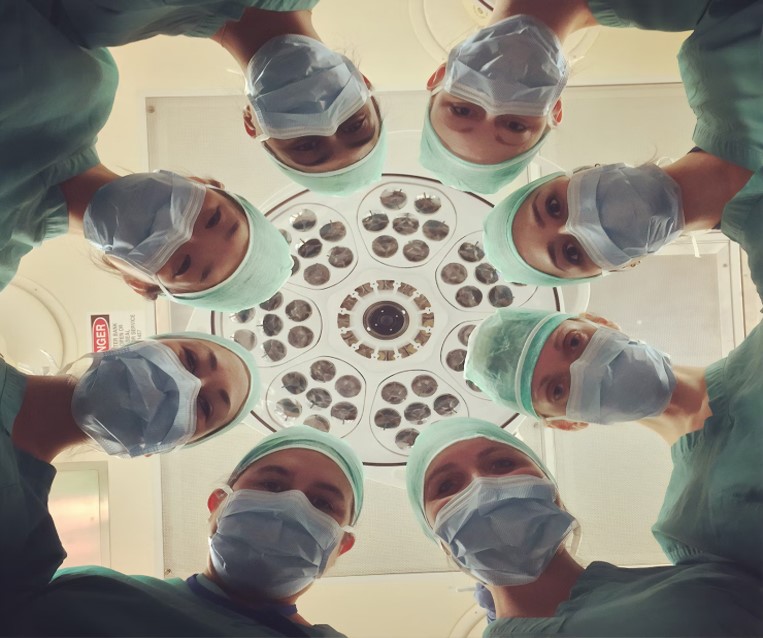
@ShahidNShah


Modern medicine continues to evolve, but few areas have advanced as rapidly as surgical precision. Technology has reshaped the way doctors plan and perform operations, improving accuracy, safety, and patient recovery. In advanced medical centers across the country — including places like Henderson, where innovation is driving patient care — precision tools are helping surgeons achieve results once thought impossible.
Today’s operating rooms look nothing like they did a decade ago. Robots, digital imaging, and computer-assisted systems allow specialists to make smaller incisions, target specific areas with accuracy, and deliver faster results. These innovations have not only transformed complex procedures but have also built trust among patients who value minimal discomfort and quicker healing.
So, how exactly is technology making surgery more reliable and refined? Here are five types of procedures where advanced tools are improving outcomes.
Orthopedic operations, such as joint replacements, require perfect alignment for lasting success. Even a small margin of error can affect mobility or comfort later. Robotic assistance now helps surgeons perform these procedures with remarkable control. These systems map the surgical area in 3D and guide each movement during the operation.
For instance, robotic-assisted knee replacements are now more accurate than ever, resulting in smoother recovery and stronger joint function. This improvement comes from smart imaging and steady robotic arms that make exact bone cuts and implant placements.
Key benefits include:
By combining robotics with human expertise, orthopedic surgery has become more consistent and dependable for patients worldwide.
Procedures involving the hands require exceptional focus and control. Surgeons must repair tendons, nerves, and tissues that are smaller than a grain of rice, which makes accuracy vital. Today, innovations such as digital imaging, robotic guidance, and precision instruments have revolutionized these complex operations. Real-time visuals and controlled movements now allow surgeons to restore fine structures safely and effectively.
In fact, experts at Engineered Aesthetics Plastic Surgery Institute explain that the technology applied for hand surgery in Henderson improves visibility and enhances robotic-assisted precision during complex procedures. Their team integrates high-magnification optics and motion-tracking systems that ensure gentle handling and help patients recover faster with less discomfort.
Notable advantages include:
This blend of innovation and surgical expertise continues to redefine hand reconstruction, helping patients regain strength and movement with greater confidence.
Heart-related procedures once required large openings and long hospital stays. Now, technology allows doctors to operate through tiny incisions while still seeing everything in real time. Modern imaging tools, such as 3D ultrasound and computer-guided catheters, help doctors navigate inside blood vessels with incredible clarity.
These systems provide detailed views of arteries and heart chambers, allowing surgeons to make quick, accurate adjustments during the operation. For example, valve repairs can now be performed through small ports rather than open-chest incisions.
In practical terms:
Technology has transformed heart surgery into a safer, more predictable process, offering patients hope and comfort through innovation.
Brain and spine surgeries demand unmatched precision because even the smallest mistake can affect vital functions. Today, image-guided systems and artificial intelligence have made these procedures more controlled than ever. Surgeons use neuronavigation tools that create digital maps of the brain and spinal cord, helping them reach deep areas safely.
For example, during brain tumor removals, real-time MRI updates help doctors distinguish between healthy and damaged tissue instantly. AI-assisted planning also helps predict surgical paths before the first incision.
Some key outcomes include:
With this level of precision, neurosurgery continues to move closer to a future where safety and innovation work hand in hand.
Cosmetic and reconstructive procedures have seen major improvements through 3D imaging, laser systems, and computer modeling. Surgeons can now plan every step digitally, giving patients realistic previews of their results. These technologies ensure symmetry, natural appearance, and minimal scarring.
For instance, reconstructive procedures after injury or illness benefit from 3D simulations that allow surgeons to visualize the best approach before starting. Precision tools also help with delicate incisions, tissue realignment, and fine sutures that blend seamlessly with the skin.
Main improvements include:
This fusion of digital planning and surgical skill ensures both safety and artistry, helping patients feel comfortable and confident in their results.
Technology has changed the future of surgery, making it safer and more accurate than ever. From robotic precision to real-time imaging, these innovations have helped surgeons operate with confidence and care. Procedures that once carried major risks are now performed with minimal disruption, faster recovery, and better results. As tools and systems continue to evolve, the focus remains clear—improving patient outcomes while redefining what surgical precision truly means.

After a car crash in Las Vegas, it’s normal to focus on the visible damage — the dented car, the police report, the insurance calls. But what often gets overlooked is your health. Even minor accidents …
Posted Oct 28, 2025 Claims Management #HealthLaw
Connecting innovation decision makers to authoritative information, institutions, people and insights.
Medigy accurately delivers healthcare and technology information, news and insight from around the world.
Medigy surfaces the world's best crowdsourced health tech offerings with social interactions and peer reviews.
© 2025 Netspective Foundation, Inc. All Rights Reserved.
Built on Dec 16, 2025 at 1:07pm